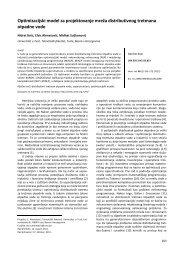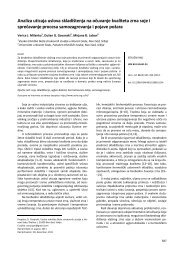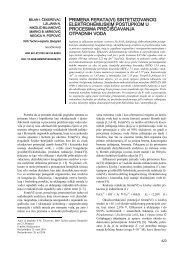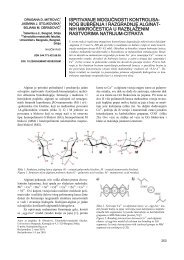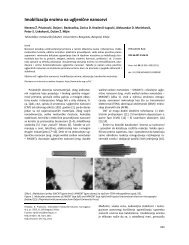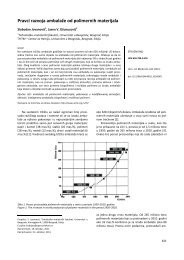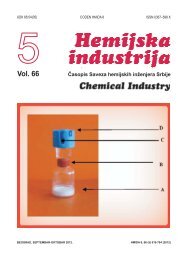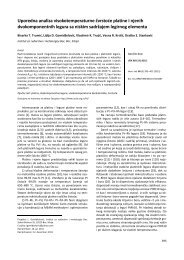HPLC, UV–vis and NMR spectroscopic and DFT ... - doiSerbia
HPLC, UV–vis and NMR spectroscopic and DFT ... - doiSerbia
HPLC, UV–vis and NMR spectroscopic and DFT ... - doiSerbia
You also want an ePaper? Increase the reach of your titles
YUMPU automatically turns print PDFs into web optimized ePapers that Google loves.
Z.S. MARKOVIĆ et al.: CHARACTERIZATION OF PURPURIN ISOLATED FROM R.tinctorum Hem. ind. 67 (1) 77–88 (2013)<br />
Figure 3. Experimental (top) <strong>and</strong> calculated (bottom) UV spectra for purpurin.<br />
nm. This is essentially a HOMO–LUMO transition, involving<br />
excitation from π to π*. The shapes of the<br />
orbitals are shown in Figure 4. They indicate that the<br />
transition is associated with significant charge-transfer<br />
form the ring B to the ring A, similar to the situation<br />
characterizing the color b<strong>and</strong>s in related compounds,<br />
such as chrysazin <strong>and</strong> anthralin, <strong>and</strong> the first strong<br />
<strong>UV–vis</strong> b<strong>and</strong> of the parent anthraquinone chromophore<br />
[54].<br />
82<br />
Similar charge transfer from the ring A to the ring B<br />
is observed for peak B, whose theoretical maximum is<br />
predicted at 305 nm. This b<strong>and</strong> is in good agreement<br />
with the experimental polarization value of 291 nm.<br />
This transition involves excitation from HOMO-4 to<br />
LUMO. The experimental value for peak C at 252 nm is<br />
in excellent agreement with the calculated electronic<br />
transition of 254 nm. This peak mainly represents excitation<br />
from HOMO-1 to LUMO+1.




